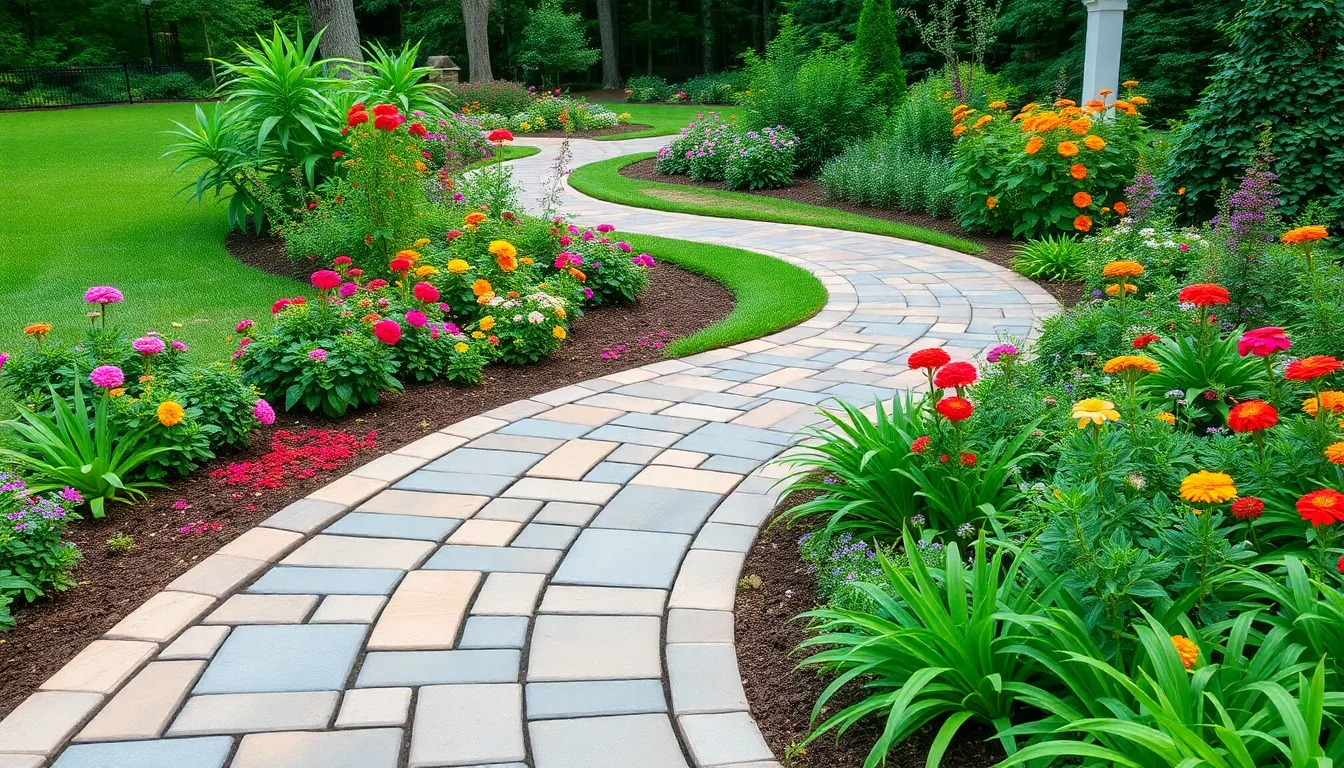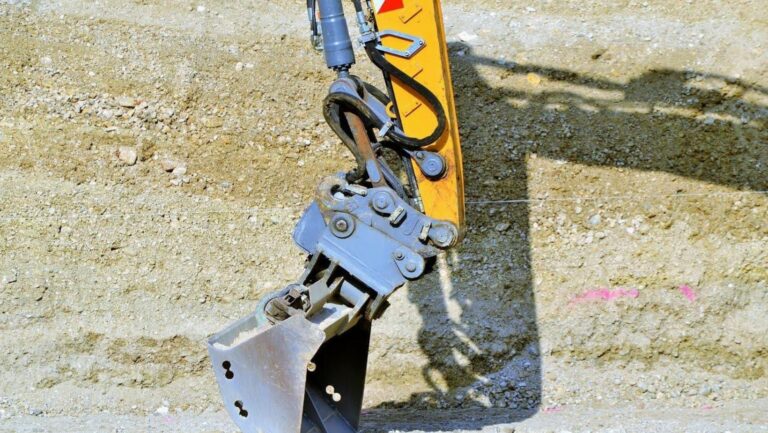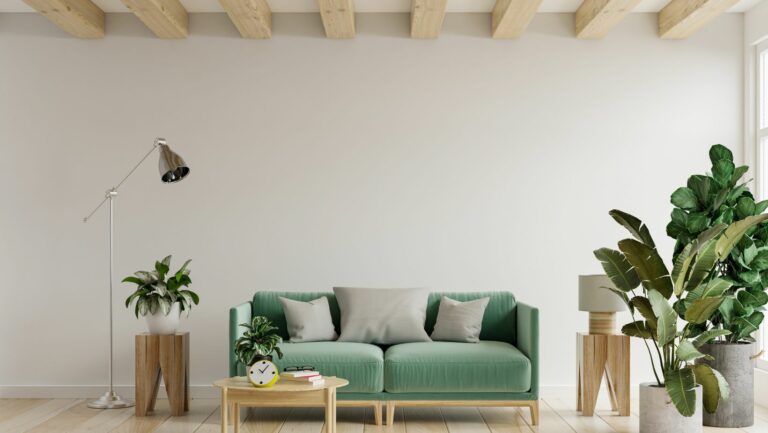Paver walkways transform outdoor spaces, blending functionality with aesthetic appeal. Whether leading to a garden, patio, or front door, these pathways enhance curb appeal while providing a durable surface for foot traffic. With a variety of materials, colors, and patterns, they offer homeowners endless design possibilities to complement any landscape.
Installing a paver walkway not only improves accessibility but also adds value to a property. The versatility of pavers allows for creative designs that can suit any style, from rustic charm to modern sophistication. As outdoor living continues to gain popularity, understanding the benefits and options for paver walkways becomes essential for anyone looking to elevate their home’s exterior.
Table of Contents
ToggleOverview of Paver Walkways
Paver walkways consist of stone, brick, or concrete units arranged to create a functional and visually appealing path. These walkways serve various purposes, including enhancing outdoor aesthetics and providing a stable surface for pedestrian traffic.
Homeowners choose paver walkways for their design flexibility. Options in materials, colors, and patterns allow customization to match personal tastes and home architecture. For instance, natural stone brings a rustic charm, while concrete pavers offer a modern look.
Durability represents another essential aspect of paver walkways. Unlike traditional concrete sidewalks, pavers resist cracking and require minimal maintenance. Homeowners can expect longevity and resilience, even under heavy traffic or harsh weather conditions.
Accessibility remains paramount. Paver walkways facilitate easy navigation, accommodating various mobility needs. Homeowners often incorporate curves or grades, enhancing functionality and beauty while ensuring safe passage.
When considering the installation of paver walkways, cost-effectiveness plays a crucial role. Initial investment might exceed that of gravel or dirt paths, yet the long-term benefits in durability, maintenance, and property value often outweigh upfront costs.
Overall, paver walkways stand out as a smart choice for enhancing outdoor spaces, reflecting personal style while adding practical advantages.
Benefits of Paver Walkways

Paver walkways offer numerous advantages for outdoor spaces, making them a popular choice for homeowners. Key benefits include durability, aesthetic appeal, and enhanced property value.
Durability and Longevity
Durability defines paver walkways. Pavers resist cracking and fading, even under heavy foot traffic and harsh weather conditions. Materials like concrete, brick, or stone provide strength, ensuring pathways withstand the elements over time. The interlocking nature of pavers allows for drainage, preventing water accumulation and damage. Routine maintenance requires minimal effort, often just periodic sweeping or occasional cleaning. This longevity makes paver walkways a cost-effective choice in the long run.
Aesthetic Appeal
Aesthetic appeal enhances the value of paver walkways. Available in various materials, colors, and patterns, pavers offer customization to suit any design preference. Homeowners often create unique designs that complement their property’s architecture. The versatility of pattern arrangement provides flexibility, allowing for curvy paths or geometrical layouts. Paver walkways not only enhance visual interest but also elevate the overall curb appeal of a home, creating inviting outdoor spaces that attract attention.
Types of Paver Materials
Paver walkways utilize various materials, each offering distinct characteristics and benefits. The three most common types are concrete pavers, brick pavers, and stone pavers.
Concrete Pavers
Concrete pavers feature durability and versatility, making them a popular choice for walkways. Available in numerous shapes, sizes, and colors, they can mimic natural stone or brick. Concrete pavers resist cracking and fading, thanks to their robust composition. Additionally, they allow for quick installation due to their uniformity. Properties like interlocking designs enhance stability, while permeable options support drainage and reduce pooling.
Brick Pavers
Brick pavers deliver classic charm and timeless aesthetics. Made from natural clay, these pavers come in rich earthy tones and unique textures. Their unmatched strength minimizes deterioration from heavy foot traffic and harsh weather conditions. Brick pavers also remain cooler in sunny climates, enhancing comfort for walking. The natural absorption of moisture prevents slippage, making them ideal for outdoor settings. Their versatility allows for creative patterns, adding visual interest to any walkway.
Stone Pavers
Stone pavers bring elegance and natural beauty to outdoor spaces. Composed of materials like granite, slate, or limestone, these pavers offer unique textures and colors that enhance curb appeal. Their substantial weight contributes to stability, ensuring resistance to shifting or sinking. Stone pavers withstand extreme weather conditions, lasting for decades with minimal maintenance. The natural variations in stone provide a one-of-a-kind look, perfect for custom designs in landscaping.
Installation Process
The installation of a paver walkway involves careful planning, preparation, and execution to ensure durability and aesthetic appeal. Each phase plays a critical role in achieving a successful installation.
Planning and Design
Planning and design determine the walkway’s layout, size, and materials. Homeowners must choose a design that complements their landscape and architecture. Creating a detailed sketch helps visualize the final product. Considering local climate and foot traffic patterns aids in selecting appropriate paver materials. Establishing a budget also influences design choices, balancing aesthetics and practicality.
Preparation and Base Installation
Preparation sets the groundwork for a successful installation. The walkway area requires clearing of any existing vegetation or debris. Next, excavation of the soil to a depth of 6-8 inches ensures proper drainage. Installing a base layer of crushed stone or gravel promotes stability and enables water drainage. Compacting this base layer aids in minimizing future settling. A geotextile fabric may also be laid to prevent weed growth.
Laying the Pavers
Laying the pavers involves arranging the chosen materials according to the design plan. Starting at one edge, pavers should align tightly while maintaining uniform joints. It’s crucial to use a rubber mallet to ensure proper placement without damaging the pavers. The use of a string line ensures straight edges, while a level facilitates consistent height. Once all pavers are in place, sand fills the joints, solidifying the structure and preventing shifting. Regular sweeping helps maintain aesthetics and promotes longevity.
Maintenance Tips for Paver Walkways
Paver walkways require minimal upkeep to retain their beauty and functionality. Regular maintenance practices enhance their longevity and appearance.
Cleaning and Sealing
Cleaning paver walkways involves a straightforward process. Homeowners should sweep surfaces weekly to remove leaves, dirt, and debris. A power washer can effectively clean stubborn stains but must be used cautiously to avoid dislodging pavers. For optimal appearance, sealing pavers every 2-3 years protects against staining, enhances color, and prevents weed growth. Select a sealant suitable for the specific type of paver material used, ensuring a long-lasting finish.
Repairing Cracks and Shifting
Repairing cracks and shifting pavers is essential for safety and aesthetics. Homeowners should examine the walkway periodically for any signs of movement or damage. Address small cracks with polymeric sand, which maintains joint stability and prevents new growth of weeds. For larger shifts, lifting affected pavers and re-leveling the base may be necessary. Reinforcing the base layer with compacted gravel enhances stability. Immediate attention to uneven pavers prevents further damage and ensures a safe walking environment.
Paver walkways offer a perfect blend of functionality and aesthetic appeal for any outdoor space. Their durability and low maintenance requirements make them a wise investment for homeowners looking to enhance their property. With a wide range of materials and designs available, paver walkways can be customized to reflect individual styles and complement existing architecture.
Proper installation and routine upkeep ensure these pathways remain safe and visually striking for years to come. By choosing paver walkways, homeowners not only improve accessibility but also elevate their home’s curb appeal and overall value.



